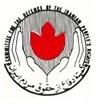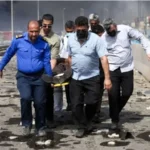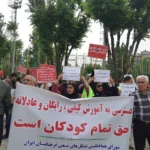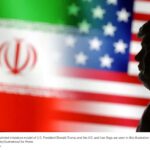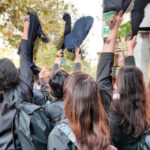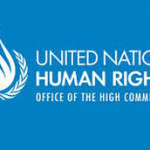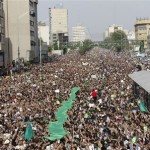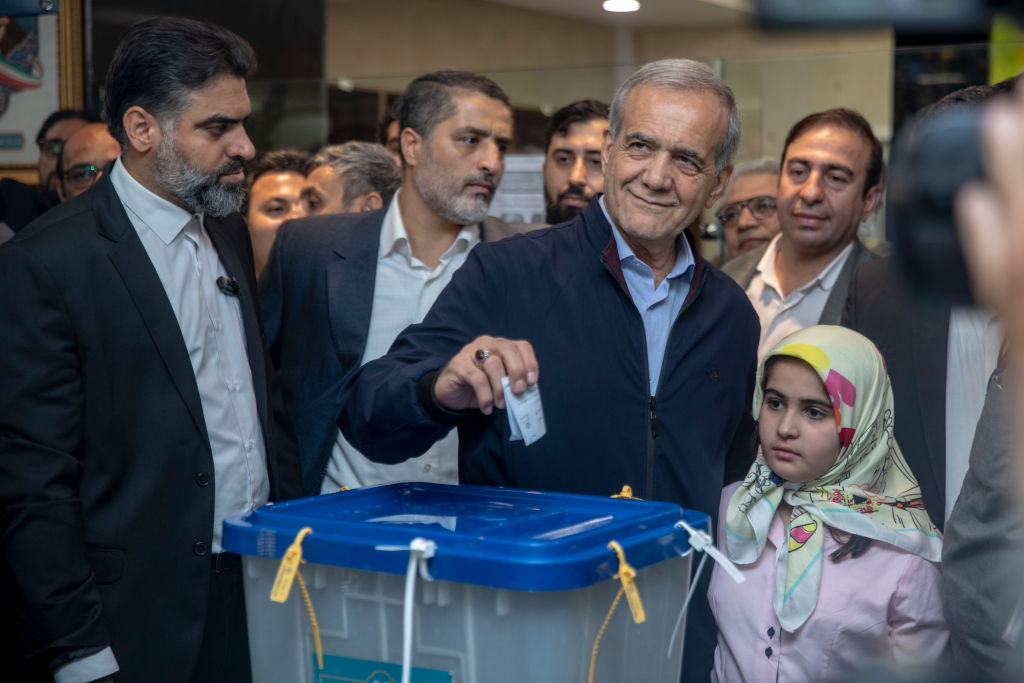
Sanctioned, isolated, and living under a neoliberal state seemingly out of options, Iranians go to the polls today.
As Iran goes to the polls on June 28 for an emergency 2024 election to replace president Ebrahim Raisi, who was killed last month in a helicopter crash, the country remains constrained by US sanctions and its own domestic elite. Sanctions have led Iran, an oil rentier state isolated from the world market, to develop a shadow economy dominated by paramilitary patronage networks that have future-proofed the state but also Iranian politics for the foreseeable future.
The Left exited the stage in Iran long ago. What remains are two failed visions of neoliberalism, conservative and reformist, that leave Iran in an acute state of political gridlock. What will bring this long stalemate to an end is the central question of this election. The front-runners all belong to blocs lacking compelling answers.
Sanctions and the Domestic Sphere
Since its inception, the domestic politics of the Islamic Republic have been shaped by American imperialism and the revanchism of a US political and military class who “lost” — and were humiliated by — Iran during the last decade of the Cold War. The United States backed Saddam Hussein in his invasion of Iran, and Tehran was in the sights of the neocons during the war on terror. But it was on the last day of 2011 that the Islamic Republic entered a financial trap that has shaped the contours of political life ever since, foreclosing the very horizon of political possibility for 90 million Iranians.
Three years into his presidency, Barack Obama deployed a new economic weapon against the Islamic Republic in the form of “extraterritorial sanctions.” These sanctions deny access to the American economy to any financial entity that trades with any Iranian firm. This remarkable financial control is possible because dollar transactions between third countries transit through US clearinghouses. “You fucking Americans,” remarked one official at Standard Chartered, a cross-border bank, as the United States issued enormous fines against violators in big finance. “Who are you to tell us, the rest of the world, that we’re not going to deal with Iranians?”
But US hegemonic financial power soon meant everyone — even the Chinese and Russians — fell into line. For Iran, a state reliant on exporting oil and on importing almost everything from grain to manufactured goods, Obama’s decision spelled ruin. The country has avoided the kind of humanitarian disaster wreaked by US sanctions on Iraq and Cuba in the 1990s, but it has been riven by chronic economic crises.The legitimacy and survival of Iran’s ruling class now increasingly depends on its ability to satisfy increasingly militarized patronage networks, which are both a lifeline to and a parasite on the formal economy.
Sanctions triggered capital flight and runaway inflation, eating away at the savings of Iran’s middle class and devastating businesses reliant on imports. Sanctions over Iran’s supposed nuclear weapons program have, rather counterproductively, militarized the Iranian economy. Rising poverty, addiction, and “deaths of despair” have filled Iranian society with a sense of ruin now in its second decade.
Protests are commonplace. In 2019, fuel-hike protests spread across the nation. Hundreds of thousands rioted over several months. Banks were set on fire and rioters briefly took over provincial towns from the authorities — over one thousand were reportedly killed in the ensuing crackdown, scores of protestors massacred in Mahshahr, an oil town on the Persian Gulf. During 2020 and 2021, industrial strikes gripped the nation; “Campaign 1400” saw petrochemical workers strikes across the south, to no avail. In 2022, mass protests over the mandatory hijab were put down violently. Hundreds of people were killed, including many women, in a campaign that put Iran’s policy decidedly on the back foot. Today, significant numbers of women flout the law, walking the streets unveiled.
Sanctions have separated Iran, a neoliberal state with Iranian characteristics, from the neoliberal world order it looked set to join in the 1990s. Since then, the government has eroded Iran’s once generous welfare state and cut subsidies on bread, fuel, and other staple commodities. Responding to its sanctioned public realm, Iran’s leaders have expanded a gray, pseudoprivate economy unregulated by the democratic state to reach international markets through front companies. The middlemen doing these deals, “black knights,” satisfy Iranian military-industrial and consumer demand and provide the country with off-the-books cash to support the “axis of resistance,” Iran’s regional allies from Yemen to Syria which look likely to enter a regional war against Israel.
The legitimacy and survival of Iran’s ruling class now increasingly depends on its ability to satisfy increasingly militarized patronage networks, which are both a lifeline to and a parasite on the formal economy. In the minds of almost all Iranians, rich or poor, it is the parasitism that is noticed. While most of the population suffers, the few with the right institutional connections are seen to be getting rich off their misery.
Attempts to resolve these problems by politicians of both the conservative and the reformist camps (the two limits of acceptable political contestation) have proven incapable of charting a path out of this impasse. Under sanctions, the traditional oil and mercantile national economy has not been able to provide the standards of living Iranians became accustomed to in the decades following the revolution. Oil exports halved after the sanctions; debt more than doubled; an ongoing hyperinflation crisis drained away the life savings of millions of Iranians; and the county’s brightest minds flew (or were smuggled) overseas. Iran has proven too hated, truly or performatively, by the American and Israeli security establishments to negotiate its way back into the orbit of US-led Western capitalism. At the same time the Islamic Republic is too economically insignificant for China to risk breaking US sanctions by investing in the country, though developing closer ties with the People’s Republic offers the best long-term vision for the country’s future.
The Candidates
While the six candidates of today’s poll were indirectly selected from a pool of around eighty by Iran’s supreme leader, Ali Khamenei, via a committee of twelve of his appointees, elections in Iran are no dog and pony show. Khamenei allows reformists to contest the election because he has an interest in legitimizing the Islamic republic with high turnouts and accepts that Iran’s highly managed democracy is often beyond his control. Inevitably, real political grievances make their way into presidential electioneering, including those that cross apparent state red lines, such as civil liberties in 2009, political prisoners in 2013, and the enforcement of the hijab in this election.
Of the six presidential candidates selected in the 2024 election, the sole reformist candidate is Masoud Pezeshkian, a sixty-nine-year-old heart-surgeon; former health minister from the Mohammad Khatami era (1997–2005); Iran-Iraq war medical veteran; and, crucially for Khamenei, a politician without a social base. Reformists in Iran trace their links to the 2nd of Khordad Front, the social base of the Khatami presidency, and, ultimately, to the Iranian revolutionary Islamist left of the 1980s. Iran’s true Leftists, Islamist and secular alike, were executed in the late 1980s or converted to economic liberalism. The outsider challengers from the 2009 election remain under house arrest. The reformists, the Left’s only successors, are characterized by a commitment to social and economic liberalism, rapprochement with the West, and anti-praetorianism.
Pezeshkian was a vocal critic of the recent crackdowns against feminist protests in Iran, marked by the killing by security forces in custody of Mahsa Amini, Nika Shakarami, Sarina Esmailzadeh, and Hadis Najafi, young women aged between sixteen and twenty-two. These are only the most famous martyrs. Scores of others were also killed. When asked about enforced hijab rules in the televised debate on June 17, Pezeshkian for the first time broke with tradition and criticized what has until very recently been a solid red line. “Just like they could not forcibly remove hijab from women in the past,” he said, referring to Reza Shah’s attempted ban on the hijab in the 1920s, the reason why the hijab was enforced in 1981, “today we cannot forcefully put hijab on them.”
With regard to the economy, Pezeshkian said that “sanctions are a disaster. We circumvent them, but in this wrong path we are taking, there is a lot of corruption. Where does all this corruption come from?” The answer to his rhetorical question is the Islamic Revolutionary Guard Corps (IRGC), which is principally represented in the contest by Mohammad Bagher Ghalibaf, whom polls place neck and neck with Pezeshkian. Ghalibaf, another war veteran (this is tacitly a mandatory qualification), is a major general in the IRGC, the paramilitary organization established to safeguard and in the early 1980s expand the revolution. Ghalibaf is a familiar figure contesting his fourth presidential election. He served as both Tehran’s mayor and police chief. Like the other candidates, he is rather uncharismatic, but he is leading in the polls, just in front of Pezeshkian. Reformist media has zeroed in on a corruption scandal dating to 2022, “baby shower gate,” concerning allegations that the Ghalibaf family traveled to Turkey to purchase a significant amount of items for their newborn.
The other frontrunner is Saeed Jalili, a securocrat of the “new right” of the 2000s who served as a foreign minister with responsibility for the nuclear file under Mahmoud Ahmadinejad (2005–2013). Jalili lost part of his leg in the battle of Basra. Despite recent calls for a unity conservative candidate, neither Ghalibaf or Jalili has agreed to drop out. This election will almost certainly result in a runoff between conservative and reformist candidates. If no candidate wins over 50 percent of ballots cast, the country will vote on the top two candidates.
The Reformists
Dissatisfaction with the status quo would be traditionally channeled into votes for reformist politicians. Reformism is a cross-class phenomenon but captures the vast majority of the Iranian middle class and the new downwardly mobile Iranians. A problem for voters in this election is that the reformists have lost significant political capital by trying for decades to achieve sanctions relief through negotiation with the West on the limits of Iran’s uranium enrichment program, which Israel and US hawks claim betrays a weapons program. This strategy, pursued most vigorously by the Hassan Rouhani administration (2013–2021), ultimately failed when the United States subsequently treated the deal as a dead letter. Under the Donald Trump presidency, the United States shifted its Iran policy by doubling down on economic war and, in tandem with Israel, assassinations of elements of Iran’s security state.Iran practiced neoliberalism with Iranian characteristics.
On the question of whether to build relations with the Great Satan, Khamenei, and by extension his conservative social base, were vindicated. In 2014, Khamenei sought to dampen conservative objections to diplomacy by stating that “what our officials started will continue. We will not renege. I have no opposition,” but the supreme leader distanced himself from the diplomatic overture by adding, “But I will say again: there is no use . . . it will not lead anywhere.” But traditional reformists voters have nowhere else to go, and their leaders have not called to boycott the election as many did in 2023, when none were on the ticket and turnout fell below 50 percent, the lowest in the nation’s history.
The Conservatives
Conservatives reign supreme across Iran’s institutions. Khamenei appoints them to key positions in the military, media, and judiciary. Due to this natural power advantage in the Iranian system, they face a legitimacy problem. But aside from questions of public resentment, Iran’s conservatives are also bitterly divided among themselves following a power grab in the 2010s by Ali Khamenei that spectacularly backfired and whose reverberations are still felt today.
Ali Khamenei, a right-wing cleric, became supreme leader in the wake of the death of Ruholla Khomeini in 1989, despite then lacking the minimal Shia religious credential of being a marja’, an “object of emulation.” Khomeini, “the imam,” had until the last years of his life transcended left and right divisions and by dint of a symbolic power that verged on divine and dominated all levels of Iranian government. In his final years, corresponding with the end of the Cold War, the Islamist right won out. This bloc is today known as the conservatives. But most conservatives saw their leader not as Khamenei but as Akbar Hashemi Rafsanjani, a founding father of the revolution, president for most of the 1990s and for decades a close friend of Khamenei (the men shared a house in the 1970s). Khamenei owed Rafsanjani for stewarding his own rise and, during most of the 1990s, tacitly acknowledging that power lay beyond his own office.
While Khamenei was considerably more socially conservative, repressive, and hawkish toward the United States than Rafsanjani, they shared a common commitment to the neoliberal turn of the 1990s, which even made the Islamist left into liberals. In the strange end-of-history moment of the early to mid-1990s, Iran was allowed into the global economy. America bought 30 percent of Iranian oil, and with a buoyant oil market, Iran’s postwar economy was radically modernized. Flush with petrodollars, the conservatives’ broad pro-capitalist faction created a prosperous neoliberal state.
But Iran practiced neoliberalism with Iranian characteristics. Under the rubric of efficiency and internal competition, state assets were divested and Article 44, a pro-nationalization article in the constitution, was reinterpreted to open Iran’s oil sector, wrested from the British in the 1950s, up to privatization. But the divestment of assets has been less significant in the true private sector than in the “parastatal” economy, a network of companies linked to the security sector, Shia clerical groups, and bonyads, charitable endowment funds for veterans and martyrs, all governed by the undemocratic state than the truly private economy.
These economic players, associated with the conservative democratic bloc, prefer isolation from the West because they can thereby monopolize capital accumulation for themselves. In a very real sense, this economic class is economically allied to their nominal enemy, the United States, because it is US sanctions that allow its members to maintain Iranian isolationism and keep the “resistance economy” in their own hands.
Relations between Khamenei and Rafsanjani soured in the late 1990s and came to a head in the 2005 election, when Khamenei tried to shore up his own power base. The plan was to establish a link between Khamenei and the Iranian working classes and at the same time deprive Rafsanjani and other adversaries in the Iranian system of power over that system. Khamani plucked from relative obscurity a provincial governor in his forties named Mahmoud Ahmadinejad and in 2005 backed him for president. Ahmadinejad’s job titles belied some sort of covert career. His activities in the 1980s and 1990s remain mysterious. He was probably a soldier of Iran’s repression of the Kurds, who eyed 1979 as a chance to renew their ambitions for independence. He has been linked to Kurdish assassinations abroad.
But as the most senior public Iranian official ruling in an oil-price boom, Ahmadinejad could establish his own patronage networks, significantly with the younger ranks of the IRGC, which destabilized the organization’s established hierarchy. There were always IRGC reformists, but the conservative majority was organized by custom under the patronage of the original revolutionaries. Ahmadinejad’s “new right” movement upset their apple cart.
Conservatives quickly turned public in their criticism of Ahmadinejad, rightly pointing out that his cronies were looting the economy. They were less worried about looting per se than about the new upstart forces doing it. Rafsanjani and Ali Akbar Nategh-Nuri peeled away from the conservative camp to become bona fide reformists. Ahmadinejad even fell out with Khamenai in the end (he was barred from running in this election). In his wake, conservatives in Iran are now deeply fragmented. The debates — staid and shallow affairs — were interesting for the fact that there was at least as much fighting among conservatives as between their camp and Pezeshkian, remarkably even on the question of the mandatory hijab.
Writing after the funeral of Rafsanjani in 2016, reformist journalist Ehsan Mehrabi reported that “while reciting the prayer for the dead over his body, he notably omitted one Arabic sentence: ‘O Lord, we know not of him except good deeds and you are the one who is all-knowing.’ Instead, he repeated ‘O Lord, forgive him’ three times.”
By the lights of US politics, Iran will remain divided from the world and against itself for at least another political cycle in both countries. Regardless of who wins the election, Iran’s domestic politics will remain constrained by US sanctions and the shadow state they have advanced. An “America-loving person will not be of use to you,” Khamenei said on June 25; anyone “who thinks that not a single step can be taken without America’s favor” will fail as president.

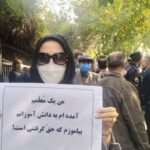
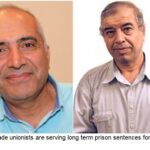
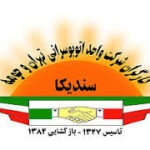

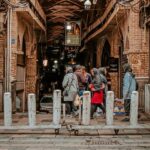
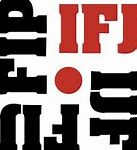



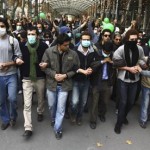
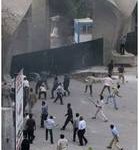
 Posted in
Posted in 